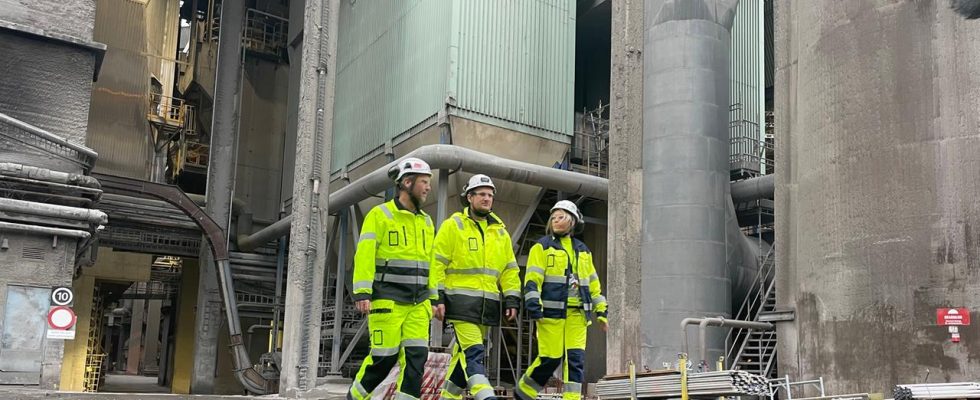world mirror
Producing cement is particularly damaging to the climate: it produces eight percent of global CO2 emissions – more than global air traffic. In a pilot project, Norway wants to store this CO2 under the seabed.
Gray smoke rises above the chimney. The old cement factory in Brevik has been Tessa Knutsdatter’s new employer for a few weeks. But the Norwegian is not supposed to burn cement here, but rather to capture what is produced during production: the greenhouse gas carbon dioxide.
“There are many things that are important to this process,” she explains. “Steam, water, chemicals, high pressure, very high temperatures. It all has to work together and we have to keep an eye on this process.”
World’s first facility
The cement industry is responsible for large CO2 emissions worldwide. Because when limestone is processed in the hot ovens, a particularly large amount of carbon dioxide is produced. In Brevik they are daring to do something new: the world’s first plant for CO2 capture and storage in the cement industry.
They want to reduce 400,000 tons of greenhouse gases per year, explains Tor Gautestad, who is responsible for the project. “We capture the CO2 at a low temperature and use a chemical that absorbs the CO2. That’s the heart of the process.”
The liquefied and cooled CO2 is sent by ship to an interim storage facility in Kollnes in the north of the country. From there it goes via pipeline to the storage location in the North Sea.
Storage far out in the North Sea
The exhaust gases are first cooled in special containers. A chemical is then added and the mixture is heated again to remove the CO2. It is then finally liquefied under high pressure, explains Gautestad. “The energy for this process comes mainly from the cement kiln. We use the waste heat – that is, what otherwise comes from the chimney -, redirect it and use it for the process.”
In Brevik, the liquefied and cooled CO2 is sent on: by ship it travels many kilometers in the north of the country to Kollnes, north of Bergen, to an interim storage facility. From here it goes via pipeline to the final storage location far out in the North Sea. They want to press 1.5 million tons a year in the sandstone at a depth of 2,600 meters.
Climate aid for all of Europe
The project is mainly financed by the Norwegian state. Prime Minister Jonas Gahr Store appears in the ARD-Interview convinced that his country could help all of Europe to achieve its ambitious climate goals.
“We have enough space to permanently store all of Europe’s CO2 in the coming decades,” says Store. “We are currently working on a value chain for the industry so that you can bring the CO2 to us by ship and one day by pipeline. We want it to be economically worthwhile. And I am convinced that it will be!”
CCS technology “in the transition period”
Along the west coast you can see what brought prosperity to Norway: floating platforms that still produce oil and gas. At the Norwegian energy company Equinor they believe that fossil fuels will continue to be needed in the future. Grete Tveit is therefore looking for ways to reduce emissions for the company.
The technology called CCS is a key on the way. “We see that the stop button for oil and gas is being pressed very suddenly. That will lead to problems. Because there are not enough alternative energy sources yet. So in a transitional period we have to capture the CO2 and store it permanently.”
Others should follow suit
At the cement plant in Brevik they know that the amount of CO2 they will capture here will make little difference to the climate. And Tessa Knutsdatter hopes that her pilot project will still make a difference.
“We have to do something. And we have to start small. I think if we get this going, others will soon follow suit.” The test will come next year: Then they will capture CO2 here in their old cement plant and let it disappear deep beneath the seabed.
Christian Blenker, ARD Stockholm, tagesschau, December 1st, 2023 3:28 p.m

